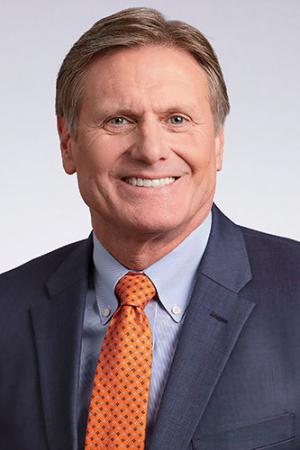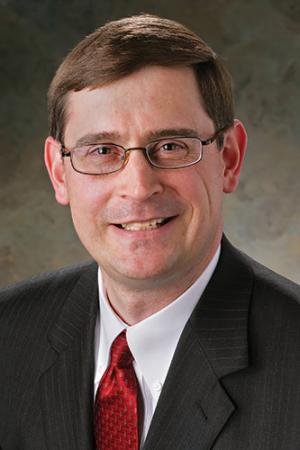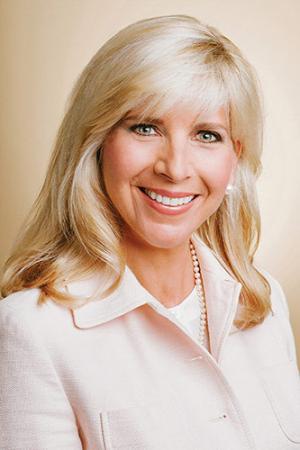Decarbonization
For WEC Energy Group, Kevin Fletcher is CEO, Scott Lauber is COO and Beth Straka is SVP.
Aggressive may not have been a word associated in the past with the Midwest, but those days are over. WEC Energy Group is aggressive with its environmental goals announced in early May. It has found a way to keep reliability and affordability intact while pursuing, yes, aggressive decarbonization goals.

Not only did WEC Energy Group slash carbon dioxide emissions more than fifty percent below 2005 levels at the end of 2020, but it committed to a sixty percent reduction in carbon emissions by 2025 and a further eighty percent reduction by the end of 2030.
That feels, like, tomorrow. How will it get there, PUF wanted to know, and so talked with major players who are making this happen. Enjoy this discussion with WEC Energy Group CEO Kevin Fletcher, COO Scott Lauber, and SVP Beth Straka.
PUF's Steve Mitnick: May 4th you made a distinctive commitment. What are the most important aspects of this commitment and plan?
Kevin Fletcher: We announced one of the strongest environmental goals in the utility industry. We plan to reduce carbon emissions from our electric generation sixty percent by 2025, compared to 2005 levels.
 Kevin Fletcher: We announced one of the strongest environmental goals in the utility industry. We plan to reduce carbon emissions from our electric generation 60% by 2025, compared to 2005 levels.
Kevin Fletcher: We announced one of the strongest environmental goals in the utility industry. We plan to reduce carbon emissions from our electric generation 60% by 2025, compared to 2005 levels.
We had previous goals as other utilities have, and as a result of our approach and creativity, we found we've been able to meet those goals and exceed them. We also took a deeper look at what we're able to achieve with current technologies. To that end, we set the more ambitious 2025 goal.
We've also established a goal of an eighty percent carbon dioxide reduction by the end of 2030, compared to our 2005 levels, and our 2050 goal for our generation fleet is to be net zero carbon. The beauty of this plan is that we can do what we just laid out, our sixty and eighty percent goals, with existing technologies.
As we plan for a bright, sustainable future, our priorities can be summed up in three words �" affordable, reliable, and clean.
PUF: Can you fill in some of the blanks as far as the existing technologies you're going to apply and invest in?
 Scott Lauber: The capital plan we announced through 2025 is not banking on anything new. As technology continues to evolve like carbon capture, we’ll evaluate those opportunities.
Scott Lauber: The capital plan we announced through 2025 is not banking on anything new. As technology continues to evolve like carbon capture, we’ll evaluate those opportunities.
Kevin Fletcher: I've been privileged to be in this industry for over forty years. When I say existing technologies, I mean leveraging the change in technologies that we've seen in the last decade.
Solar and battery storage are two examples. To now see those technologies at much reduced price points is amazing. Solar certainly provides what we need at a time when the sun is shining, but we need backup.
Blending battery storage with solar and wind, along with our current technologies will allow us to meet our 2030 goal. We are also retiring older, less efficient generation and replacing them with more efficient natural gas technology.
Scott Lauber: When you think about the technology and how far we've come in the last ten years on cost and performance, it continues to improve. We were able to achieve a little over fifty percent carbon reduction last year compared to our 2005 baseline. We have seen good progress, which gave us an opportunity to relook at where we're at and set new, industry leading goals.
 Beth Straka: It is especially important from an investor’s perspective, because it seems that many of the ESG oriented funds, including index funds, are considering your overall exposure to coal.
Beth Straka: It is especially important from an investor’s perspective, because it seems that many of the ESG oriented funds, including index funds, are considering your overall exposure to coal.
The frigid temperatures we experienced in February showed just how important reliability is in our business. Reliability comes through fuel diversity. By adding solar, wind, and battery storage, along with efficient and clean gas plants, we're able to achieve these goals with the operations we currently have and maintain the reliability our customers depend on.
The capital plan we announced through 2025 is not banking on anything new. As technology continues to evolve like carbon capture, we'll evaluate those opportunities.
Kevin Fletcher: We are actively engaged with the Electric Power Research Institute (EPRI) and the Gas Technology Institute (GTI) Low Carbon Resources Initiative. We're one of the members that got involved early on.
We're looking at the current technologies like solar and batteries, but also ones that need to be in place for the future like carbon capture and others. The focus of the initiative is to accelerate the development and demonstration of new low- and zero-carbon energy technologies.
At the end of the day, to get to where we need to be to hit our 2050 goal, for us and our peers, new technologies have to be a part of it.
What we have to be smart about is making sure we've got the right generation diversity moving forward. We're going to be aggressive with technology, but we're also going to be smart about it. At the end of the day, our responsibility is to make sure that the gas is flowing and electricity is available to our customers. That's our first and foremost responsibility.
Beth Straka: Speaking of flowing gas, don't forget that a little more than a third of our business is natural gas distribution. We also identified and announced a new opportunity for our methane reduction goal.
We set a new goal of net zero methane emissions from natural gas distribution lines by 2030. We are going to achieve this by continuing to upgrade our gas delivery networks, and also by incorporating some renewable natural gas in our system.
PUF: What's the motivation? Why are you all so passionate about this commitment and plan and the related investments and actions you're taking?
Kevin Fletcher: Ultimately, it's our responsibility to provide our customers with the energy they need, and we take that very seriously. We want to do it in a way that's affordable, reliable, and clean.
With current and future technology advancements, we're able to reach our goals and meet the needs of our customers. It is an exciting time to be in the utility industry. To leverage technology and engineering creativity in a way that helps society and satisfies what our customers are asking for.
Let me underscore this �" customer satisfaction and reliability are our bedrocks and it's a strong foundation. If our customers are asking us for affordable, reliable, and clean energy, then we will deliver.
We aggressively are going down this path because, number one, it's the right thing to do. Number two, we have the ability and the capability of doing so.
Scott Lauber: When you think about where we are with the technology and the performance, it turns into a win on several fronts. It's good for the environment. It's good for customers because we're lowering our fuel and operating costs. It's making an investment for shareholders by improving the climate, having a better cost structure and adding fuel diversity.
When you look at every box that you want to check, it's positive in every direction.
Beth Straka: In 2020, we launched our priority sustainability issues, recognizing that if we provide an informed sustainability strategy, that will in turn drive long-term business value.
Our priority sustainability issues are a reflection of many key stakeholders. Certainly, our customers are important, but Scott also added in another important stakeholder group �" our investors. They're driving a lot of this, too. We're hearing from them, and they have their own sustainable priorities.
Kevin Fletcher: It also lines up well with what our state jurisdictions are interested in. The beauty for us is that the path that we're on is the path we chose because it's the right thing to do.
If you look at our goals, they support national and international efforts, including the Paris Climate Agreement. It ties in not just locally, but globally to what investors and customers are looking for.
PUF: It sounds like you'll be able to do clean, but also cost efficiency and resilience and do it almost building each onto the other.
Kevin Fletcher: It has to be done that way. The decisions we make when we retire plants and introduce new technology have to be done in a way that is cost effective and meets our customers' reliability requirements. I feel good about our direction, and I'm proud that we've announced some of the strongest environmental goals in our industry.
Beth Straka: It is especially important from an investor's perspective, because it seems that many of the ESG oriented funds, including index funds, are considering your overall exposure to coal. We took a look at our asset base by business type, and currently we're around seventeen percent coal generation.
We're looking at our capital plan that incorporates a number of new, regulated renewables, and are continuing to invest in renewable infrastructure investments as well. Our coal-based assets will be less than ten percent by the end of 2025.
Kevin Fletcher: We're confident we can achieve the milestones that we've talked about while continuing to be a leader in reliability, customer satisfaction, and financial performance.


